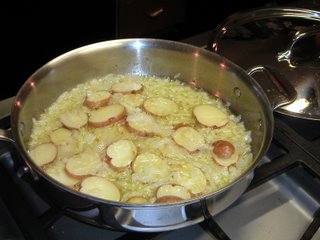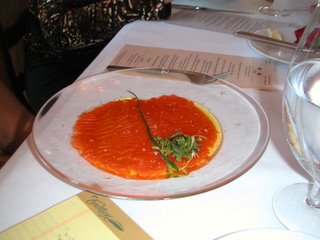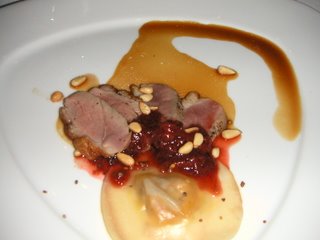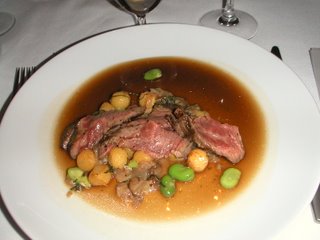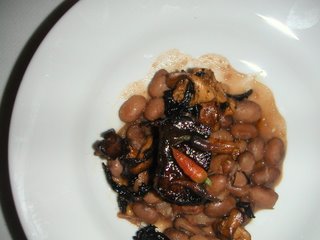Keeping Cool, but Staying Sober


Sorry, it sounds like I have joined a 12 step program. But I couldn't resist the alliteration and the reference to a previous post.
Seattle has been hot, hot, hot. Now I know the rest of the country has been hot, but you are dealing with a narcissistic Seattlite here. We don't have hot weather here, in fact, the great joy of Seattle is that there isn't any extreme weather here, except extremely beautiful and wonderful summers. Except this year.
Dale has been keeping me refreshed with his southern-style ice tea while I build the "cabana" on the roof terrace, and figure out how to install the drip irrigation system. Short of wearing my Camelback all day, I needed some other source of hydration than iced tea, so I have been supplying him with my own repertoire of iced drinks.
I love international travel, but Italy is my true love. The architecture, the food, the men, the language, the violent but art-filled culture, the clothes, the cars, the design, the history--it just goes on. France is wonderful, and the food at amny times beats Italy. Oddly, the only country that comes close is Japan, but more on that later. While I was working at Hadrian's Villa on an architectural dig, I was introduced to a most wonderful coffee beverage. No one can remember the name, but I thought it was a shakelatta. I probably am wrong. Anyway, it is best prepared by a younger and robust man, rather than the old men at the Italian coffee bars. The younger guys just put more energy into the preparation, and the result is so much better. An espresso shot is poured over ice into a martini shaker. A bit of sugar is added--your usual amount or to taste--and then the cap is secured. The barista then shakes the shaker vigorously for about 10 seconds, and this where the old guys peter out. They can't muster the energy to shake hard. When you pour the contents into a small glass, varying shades of brown foam layer over the icy luscious elixir. If it is only a so-so job of shaking, then the foam will be flat; but if the maker is a frustrated bartender working in a coffee shop, then he will shine, and the drink will amazing. Enjoy, and if you know the name, let me know.
 When I went to Japan a few years ago, nothing had prepared me for the trip, albeit I had read Gateway to Japan, by Kinoshita/Palevsky, probably the best travel guidebook I have read in my adult life. The culture, religion, feudal wars, emphasis on food, national drink (tea), art, architecture and landscaping can only compare to Italy.
When I went to Japan a few years ago, nothing had prepared me for the trip, albeit I had read Gateway to Japan, by Kinoshita/Palevsky, probably the best travel guidebook I have read in my adult life. The culture, religion, feudal wars, emphasis on food, national drink (tea), art, architecture and landscaping can only compare to Italy.We went to the Ippodo Tea House, which has been in business since 1717. It deals only in the high quality teas of Uji. The building is an historic building, one of many original stores that have been preserved through the ages. While there we ordered many teas, but in that humidity, this frozen ice tea Ujishimizu made from wonderful matcha tea beat them all for pure refreshment.
You simply add water and ice or yogurt to a few teaspoons of the Ujishimizu and stir. It seems a little self-indulgent to order tea from Japan, but good quality tea is pretty expensive and the mark up is pretty high at these little boutique stores. Plus you never know what you are getting. The name and the package look/sound cool, but the product inside is gross.
But the quality of Ippodo is the highest (Mariage Frere has some of the worst green tea I have ever tasted), and the packaging is amazing. Order a little tin of matcha for a tea ceremony, and marvel at the wrapping as you unfold each layer of paper like so many petals. Matcha is not for everyone--planning a tea ceremony?--but with a little sugar as in Ujishimizu, you'll never look at ice tea again the same way.

Seattle NPR station KUOW did a special on iced tea and provided the following link to the guest speakers.
http://kuow.org/defaultProgram.asp?ID=11212
http://www.floatingleaves.com/Rob Bageant is the co-owner of Floating Leaves Tea; a Chinese tea house in Ballard.
http://seattleteacup.com/Merchant2/merchant.mvc?Screen=SFNT&Store_Code=T Elisabeth Knottingham is the owner of the Tea Cup on Queen Anne.
Tea houses http://www.nwsource.com/restaurants/guides/teahouses.html

